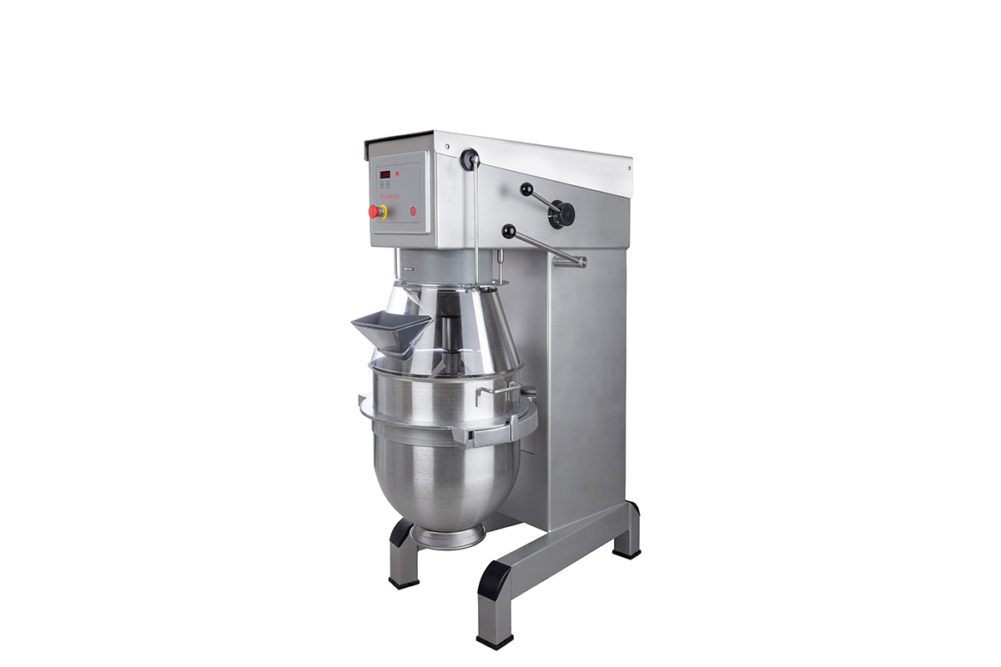The more horsepower needed for stiffer doughs, the more wear bakers can put on the machine. Mixer configuration and mixing to energy can ease that burden.
“We’re trying to be more efficient in our bowl and arm configuration, which allows us to shorten our mixing time and speed,” said Damian Morabito, president, Topos Mondial Corp. “With that efficient design, you’re pounding the machine less, and you’re running it less.”
Mixing to energy rather than time refers to running the mixer until a target level of energy is imparted to the dough. As dough is mixed, bakers can follow the energy curve until it peaks, which marks when the dough has been developed.
“Clever programming of the mix to energy cycle provides a lot of flexibility on the dough development curve but also allows the torque being generated to be limited to the design limitations of the mixer,” said Andrew McGhie, director of sales, Shaffer, a Bundy Baking solution.
Rapidojet doesn’t use a traditional mixing tool to develop dough. As dry ingredients fall, liquid ingredients hit them at high speeds, instantly hydrating and developing gluten. This process cuts down on mix time in the final mixer and avoids energy spikes.
“Since there is no friction imparted upon the dough or batter produced by Rapidojet, final consistency is always ensured and the need for ice or glycol is eliminated,” said Ken Schwenger, president, Bakery Concepts International.
This article is an excerpt from the October 2021 issue of Baking & Snack. To read the entire feature on Mixers, click here.






